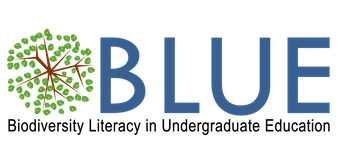265 total view(s), 104 download(s)
GUID Module BLUE.docx(DOCX | 8 MB)
KEY_GUID Module BLUE.docx (Instructors only)(DOCX | 8 MB)
- GUID Explorable Explanation on Figma
- License terms
Description
DESCRIPTION
As natural history specimens are digitized and uploaded online, we rely on biodiversity data standards to help organize, track, and manage all the data. GUIDs (Global Unique Identifiers) play a crucial role in data management and are increasingly important for people in and adjacent to the natural history community. GUIDs are a type of unique identifier that allow for unequivocally identifying and persistently tracking a specimen. Encouraging 'GUID literacy' within the biodiversity informatics community, from students to professionals, will increase overall data quality and data robustness.
This module will walk learners through the use of identifiers for digital natural history collections and the importance of GUIDs (globally unique identifiers). Learners will practice searching a specimen and its corresponding data based on their research interest. This module can be incorporated in lessons around conducting biodiversity research and following standards and best practices for digital data curation.
Included is an optional Explorable Exploration, an interactive guide on GUIDs targeted towards collections professionals to show learners how GUIDs fit into a collection professional’s work.
OBJECTIVES
Upon completion of this module, each student should be able to:
- Explain the role of identifiers and Globally Unique Identifiers (GUIDs) in natural history collections.
- Locate and access specimen data from a digitized natural history collection.
- Describe how research and specimen management are supported by GUIDs
- Summarize the value of digitized specimens in research.
Cite this work
Researchers should cite this work as follows:
- Chan, V. Z. (2023). Identifiers in Digital Natural History Collections. Biodiversity Literacy in Undergraduate Education, QUBES Educational Resources. doi:10.25334/KNF8-R827
